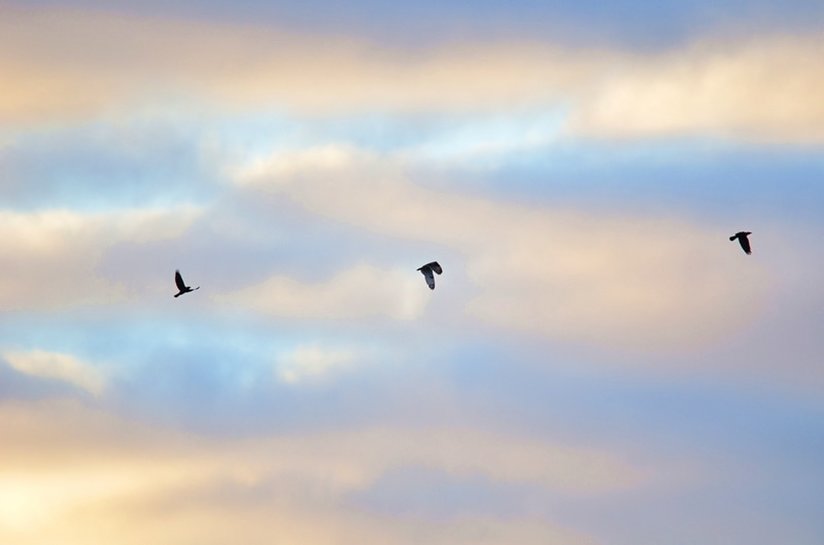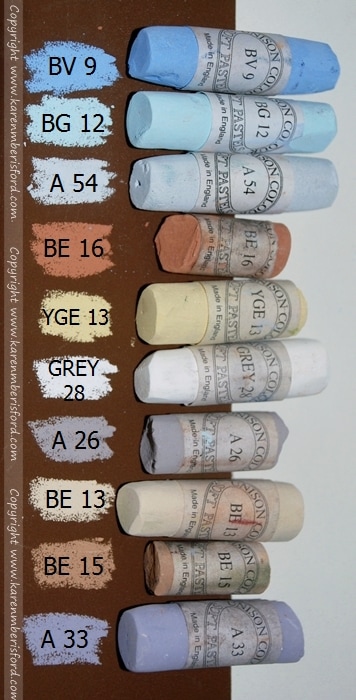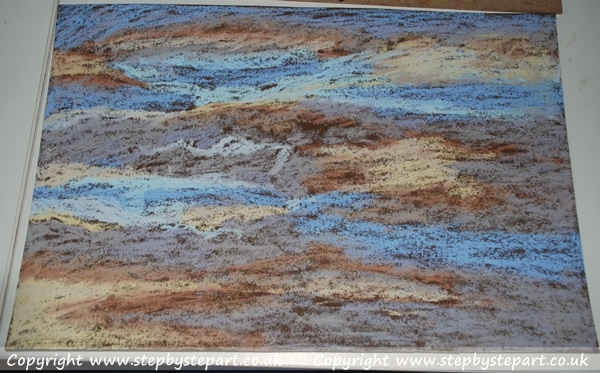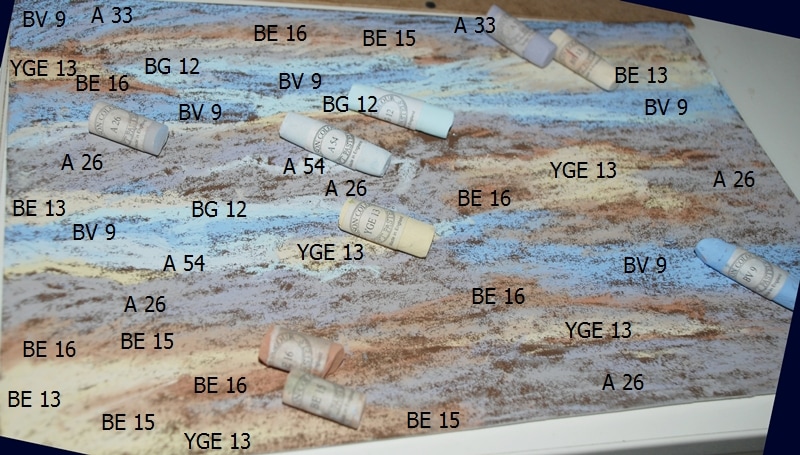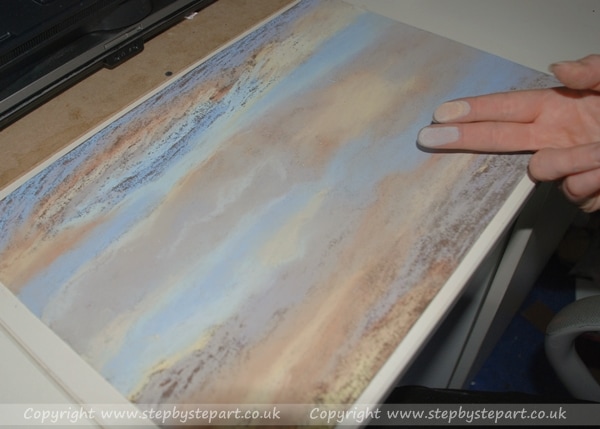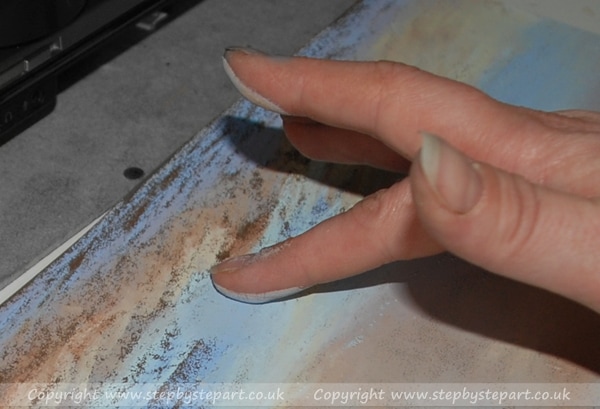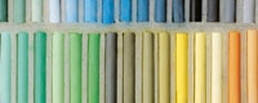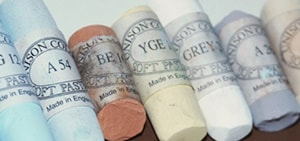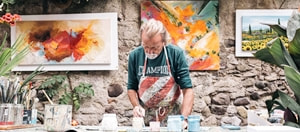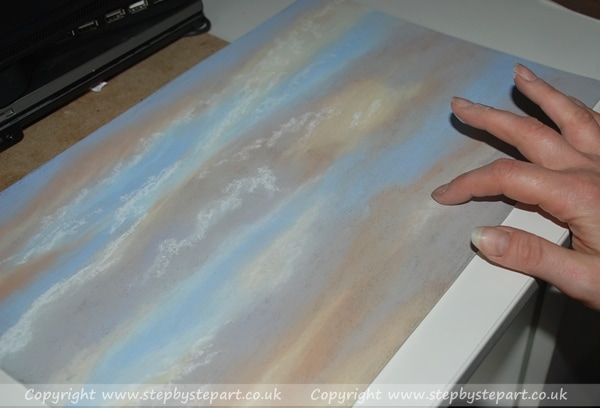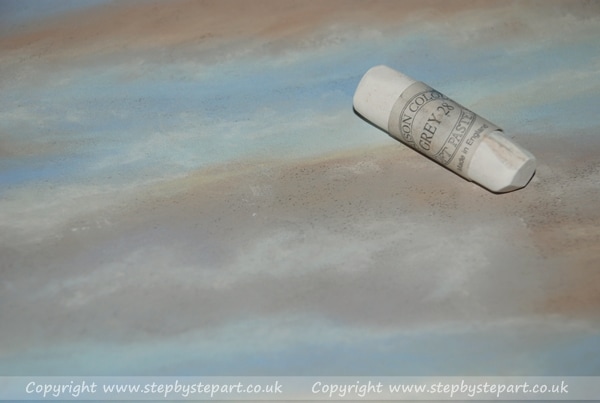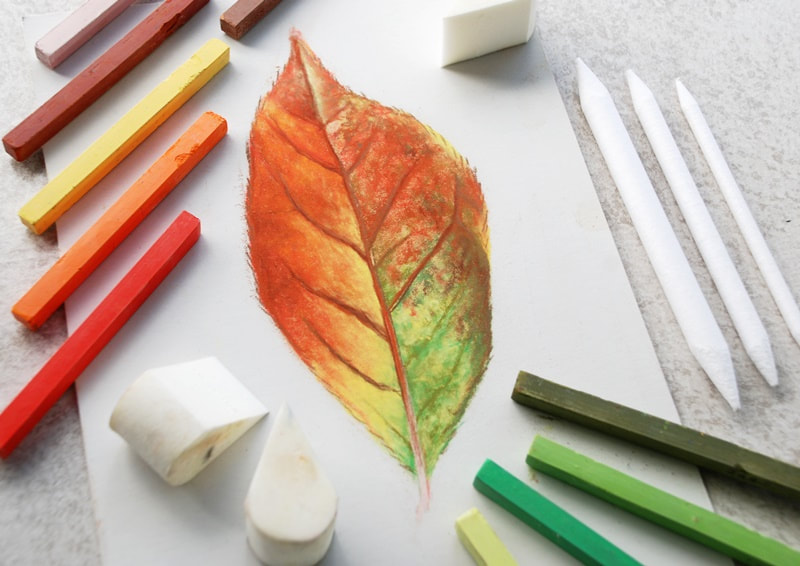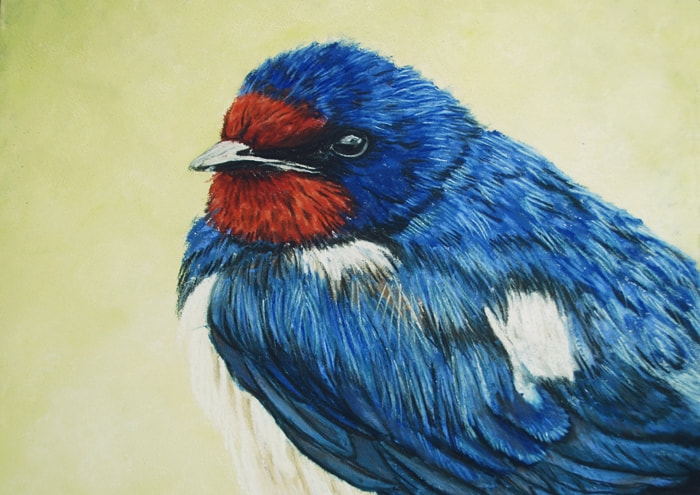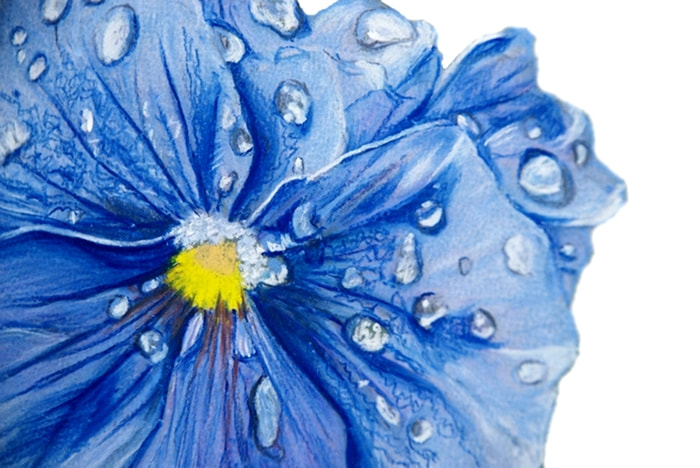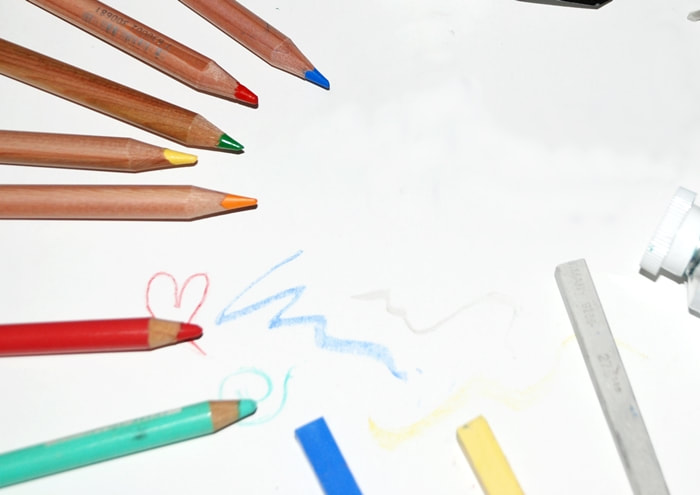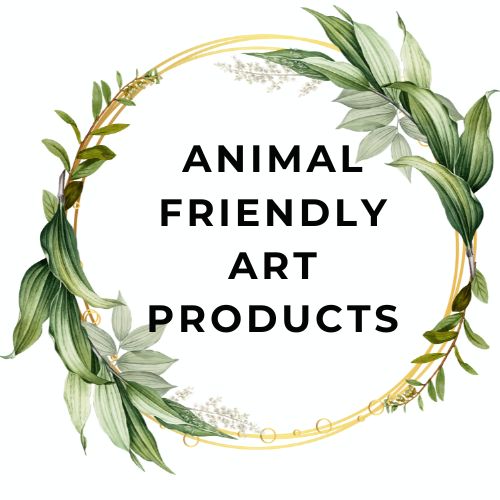Creating a Tonal sky in Soft Pastels Tutorial
Welcome to this step by step tutorial of a Northumberland sky in soft pastels. Completed on Brown Canson Mi-tientes 'Touch' paper. The tutorial below is aimed at those interested in learning how to create soft and delicate tonal backgrounds in soft pastels and is aimed at those new to pastels. The high quality Unison pastels have been used for this tutorial but you can try this exercise out using any brand (not suited to pastel pencils) Use the colour guide next to the reference image to select your own pastel tones, however it is not important to match them precisely. Pastels work well on textured paper to minimise 'pastel drop' and are easier to blend on papers such as Pastelmat or Art Spectrum Colourfix smooth, but there are many others out there which suit other artists better due to their style. Although it is not the only way to work with pastels, this tutorial is based on my own preference that I have found works best for me. Pastels are a great medium in that you can easily cover up mistakes by simply applying another colour over the top and are fun to work with.
IMPORTANT NOTE:
Soft pastels create dust so you may wish to wear a face mask whilst you work, which will protect you from inhaling dust particles. We highly recommend this for those who suffer with asthma or other respiratory issues. Soft pastels may not be suitable for everyone for this reason.
If you work with soft pastels on a regular basis, we recommend that you invest in a HEPA air filter.
Soft pastels create dust so you may wish to wear a face mask whilst you work, which will protect you from inhaling dust particles. We highly recommend this for those who suffer with asthma or other respiratory issues. Soft pastels may not be suitable for everyone for this reason.
If you work with soft pastels on a regular basis, we recommend that you invest in a HEPA air filter.
